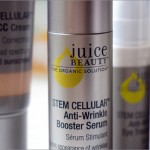
What do I like to see in a product packaging?
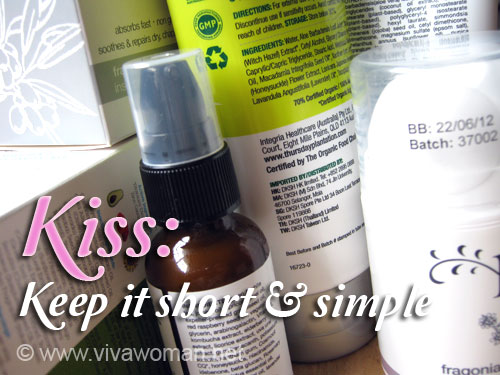
Those who follow Viva Woman on Facebook may have noticed that I’ve started “exposing” products that claim to be organic but do not appear so based on their ingredient list. So yes, while I am no expert in reading the ingredient list but it is the first thing I look at when I am considering if I should test or purchase a product. I hate it when the ingredient list are not reader friendly and printed in really small prints. And because I’m into natural and organic products, information like expiry date is also very important. Today, I’ll share with you some of the good packaging practice I’ve come across recently. Hopefully, more manufacturers will take note of such details when marketing their skin care products.
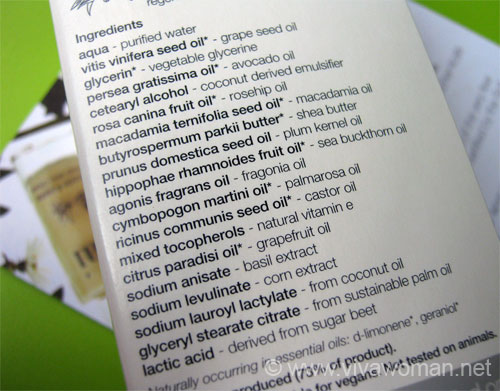
Simplify the ingredient list
I have no idea what is persea gratissima oil but I do know avocado oil. I love ingredients that are easy to understand and I was really impressed by the ingredient listing on Pai Fragonia & Sea Buckthorn Instant Hand Therapy Cream. A side of the box was dedicated to the ingredients and while jargons were employed, they were explained and even though I may not know each ingredient, I know it looks pretty natural at a glance.
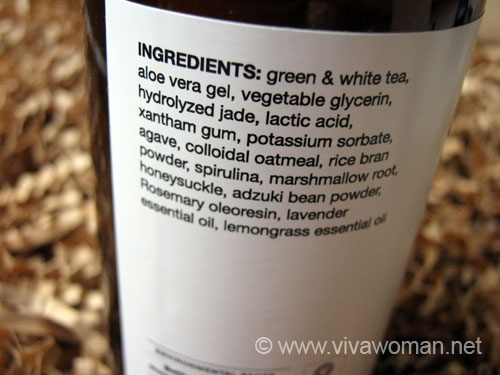
Unclutter the ingredient list
I appreciate manufacturers who bother to list the ingredients boldly at a section of the product such that I can always refer to it easily. Marie Veronique Organics does a good job of this on all their products with lots of white space and no clutter. This makes it so reader friendly.
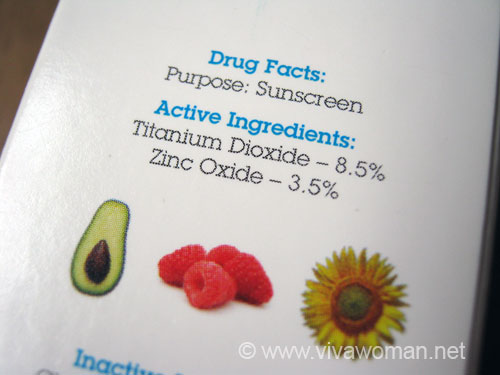
Highlight the active ingredients prominently
This is particularly important for sunscreens. Many a times, the active ingredients are buried in the entire list that it will have to take an expert to pick them out. I know the active ingredients of sunscreens but I don’t necessary know them by their variations. In fact, I sometimes have to run a search just to be sure. Hence, those brands that bother to list their active ingredients clearly complete with the percentage gets my thumbs up. Many mineral sunscreens follow this format and an example is the Vive Sana Solar to Polar Ultra Sun Care I reviewed recently.

List key benefits clearly
While description is good but in today’s context where we are always inundated with lots of information on a daily basis, basic design elements should be employed in product packaging. The easier I can understand the product properties, the higher the probability of purchasing that product. The Thursday Plantation products do quite an effective job using this technique through simple bullet points.
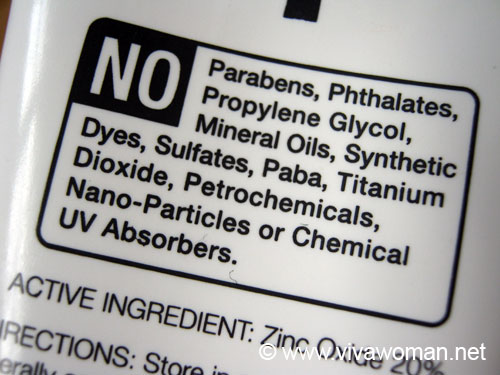
Emphasize the key information creatively
Most natural and organic products will highlight what they do not contain. Some do it better than others. One good example I’ve come across is Suntegrity All Natural Moisturizing Body Protection SPF30 where ingredients the product do not contain are highlighted within a box and the word NO is printed in reversed white. I find that really neat and effective.

Print clear and specific best by date
This is not only important for natural and organic products but all other products as well. It irritates me to find only batch numbers printed on a product packaging and most of the time, these batch numbers are in secret codes that are absolutely impossible to decode. And that little icon which tells me the product is good for 6 months or 12 months after opening is also useless to me if I don’t know when the product was manufactured. So I appreciate products with either manufacturing date or used by date clearly indicated to facilitate my purchasing decision.
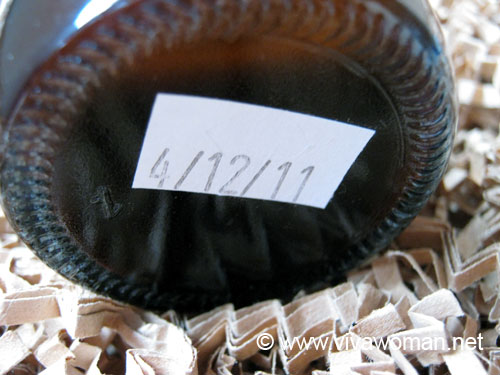
Be honest and transparent
I don’t think I’m being picky or fussy here. I believe many of you place emphasis on the information that is printed on the product packaging. Granted that there is a cost involved in doing all these things but most of such costs are passed on to the consumers anyway so why not do a better job out of it. And for goodness sake, please stop using labels like “certified organic” when your products clearly aren’t so. Honesty is always the best policy!
© www.vivawoman.net copyright notice ☺
______________________________________________________________
Comments
Leave a Reply
You must be logged in to post a comment.

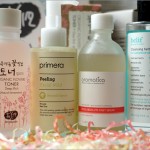
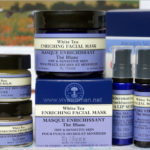










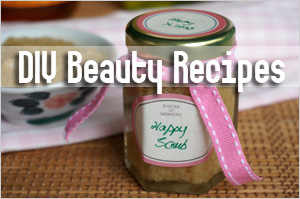
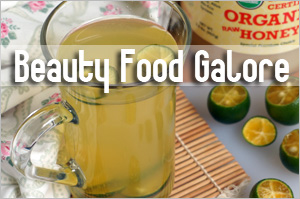





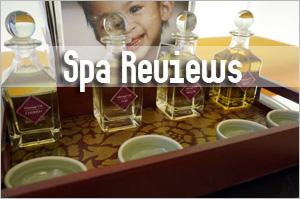
Thanks for the tips…
I read the ingredients list as much as I can and I get confused when all the scientific names come out such as for Grape Seed Oil, etc… So I love simple packaging (and it looks more minimalist too, which is attractive).
Though one thing is a lot of products don’t put the expiry date or manufacturing date in the bottle/jar/box.
It makes me hesitant to buy when it’s at the shelf coz I don’t know when it was produced (or how long it has been on the shelf). But I don’t mind no production date when I buy direct from the manufacturer’s site (not guaranteed that it’s not old stock, but hopefully less chances of it being so) ?
Great points listed!
Although I’m not so into organic and natural products, I do agree better description is good.
An additional thing about packaging is that companies should think about going green for packaging.
For certain products, especially gel type products, I don’t need a pump bottle. Having one is a waste of materials and also I can’t get all the products I paid for which are residual on the inner wall of the bottles.
But for expensive serum type products which are liquidity and prone to oxidization, a pump bottle might be the best option. Then can’t be helped.
Not all the products I am using are organic but your suggestions are very good. You should feedback to shops like Watsons, Guardian and NTUC Unity so they can in turn inform their suppliers.
i totally agree! i remember hearing that coconut oil also has a really strange complicated name as well… its like are the ingredients list printed for the manufacturers or the consumers?
plus another thing with packaging i like is prettiness ? my favourites are definitely annick goutal and paul & joe hehe
So true about it!! I feel the same and you are not being fussy at all. Every field says don’t use jargons with the users. Most of these names are jargons for us.
Thanks for posting.
I have read that every company has a different jargon for the chemicals and their ingredient lists so yes it is easier for the consumers to read the general names instead of chemicals ones and I always insist on seeing the manufacturing date…I prefer to buy a product which is at max only 6 months old and that also I avoid…fresher the better….
I really enjoyed this post. The industry is laced with deceptions, jargons and phrases meaning nothing much of the time. Some even gone as far to show they use Organic water….you just cant beat that.
Wonderful points Sesame! Very useful tips. I hate it when products don’t list everything, and don’t list them clearly.
Thank you Dee…yup, same feeling. Worst with those that try to mislead.
Organic water? I haven’t seen that one around…haha…
I like the idea of buying fresh products too…good thing many of the natural/organic companies offer around 6 months expiry. If we use the product consistently, then it’s not a problem as most likely they’ll be depleted by the 4th month.
I just hope more manufacturers (especially the bigger ones) will take note…it’s very hard to understand the jargons as we’re not experts in the field.
Oh ya…I love pretty packaging too…usually draws me to check them out. ?
Think it’s hard for the pharmacies to influence the suppliers…we consumers should take the lead instead! ?
I think more and more companies are trying to be more green conscious but maybe still not good enough. I like pump bottles too but some of the pumps are always faulty!
Yes, very sticky about the expiry date cos we have no idea at all! Even when products state it’s like 12 months or 18 months expiry, the older it gets, the less potent the product is.
I am an outsider of the scientific names. I try my best to read them, but more often than not, they serve to confuse than enlighten me.
Another thing is, though I appreciate the manufacturer pinpoints the product benefits by bullet points, I still have to be very careful about the hidden secrets. Sometimes, the package claims that the product is natural, but when I try it, I can smell a strong fragrance. So I guess artificial fragrance is being used. If that’s the case, can it still be called “natural”? I don’t know.
Totally agree! ? Sometimes I’d spend times in stores and note down what I like and google ingredients (with their complicated latin names) at home… LOL! Or have my smart phone do the googling while I’m in store ?
One day I was approached by one of the people selling products on stands at the mall. He was commenting on how the products can improve the condition of my skin (I had skin problem due to food intolerances, and back then I only just found out about it, so my body was still adjusting to the new diet). He claimed that the product was “natural” etc (the typical sales pitch). I turned the product over and had a look at the ingredients… almost laughed at it… I saw chemicals, chemicals and more chemicals… sure they had natural ingredients, but very little of it, and with that amount of chemical and synthetic ingredients in it, I don’t see it to be natural at all. And he was a bit shock that I studied the ingredient list thoroughly…
I know what you mean…many Korean products tend to be like that. There is an artificial fragrance even though they claim to be natural.
A lot of these store assistants may not be educated on the ingredients themselves. The other day I checked out this Korean product claiming to be organic and when I asked them which ingredients are organic, they can’t tell much much either.
I have came across many organic and mineral makup kits which claim to be organic but when I do read the details they aren’t that organic at all.
Best thing I have learned is to see what percentage of it is organic. Some are 95% and some are 75% organic.
95% organic would be good!
There are laws governing what ingredient names can and cannot be used in the USA. I am guessing that is why the jargon is employed. It actually gives me more confidence that the company is into producing a quality product (complying with labeling laws to me equates more likely to comply with other laws as well ? ) instead of greenwashing when they use the jargon instead of the everyday term.
Lovely post, great info!
Thank you. ?
hey sesame, how do you decipher the mvo expiry/batch labels at the bottom of the bottle? the one in your photo above says “4/12/11”. what does that mean?
It’s the month, day and year. So this one expires April 12, 2011. ?
Actually % of organic ingredients in a product may be just as misleading, in several ways actually. Water is not classified as organic and is actually the major ingredient in some products. Therefore a product that is 100% organic can never contain water, therefore one can easily find many organic oils. Moisturizers and shampoos have alot of water in them and although they can e.g. only be 40% organic their ingredients can still be 95% natural. One way of quickly determining how natural or organic one’s product is, besides the nigredients, is to have a look at what kind of certification they have.